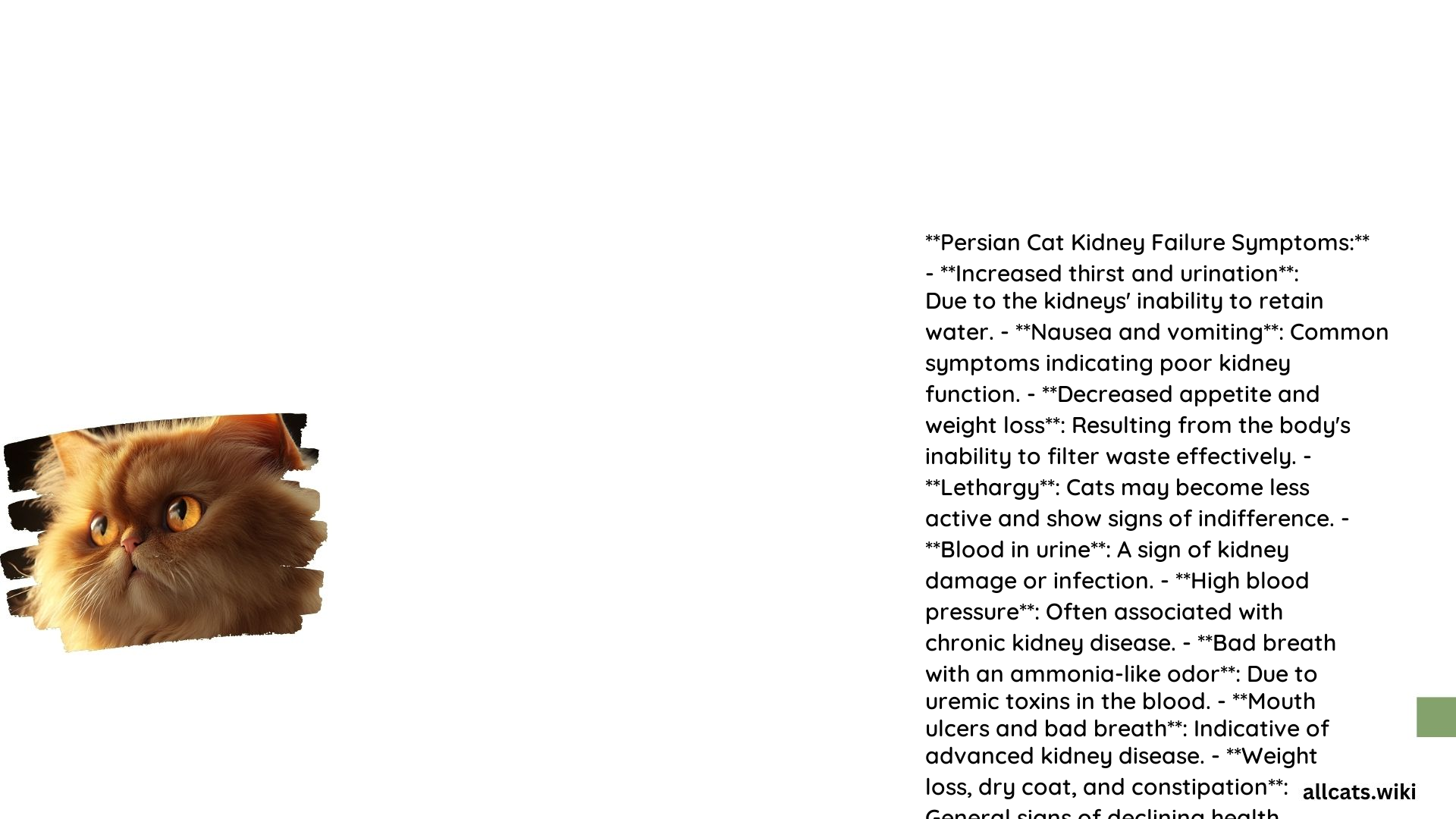Persian cats are particularly prone to polycystic kidney disease (PKD), a genetic disorder that can lead to kidney failure. Early signs often include increased water intake, more frequent urination, nausea, vomiting, and a reduction in appetite, leading to weight loss and lethargy. As the disease progresses, cats may exhibit behavioral changes, physical signs, and other health indicators.
What are the Symptoms of Kidney Failure in Persian Cats?

The symptoms of kidney failure in Persian cats can vary depending on the stage of the disease. Here are the most common signs to watch out for:
-
Increased Thirst and Urination: One of the earliest signs of kidney failure in Persian cats is an increase in water intake and more frequent urination.
-
Nausea and Vomiting: Cats may experience nausea and vomiting, which can be indicative of the buildup of toxins in the body due to impaired kidney function.
-
Decreased Appetite: A reduction in appetite is a common symptom, leading to weight loss and overall lethargy.
-
Weight Loss: Cats may lose weight due to the combination of decreased appetite and metabolic imbalances caused by the kidney disease.
-
Lethargy: General lethargy and a lack of energy are common symptoms as the disease progresses.
-
Blood in Urine: In some cases, blood may be present in the urine, which can be a sign of kidney damage.
-
High Blood Pressure: Elevated blood pressure can be a secondary effect of kidney disease.
-
Behavioral Changes: Cats may exhibit changes in behavior, such as pacing, restlessness, withdrawing, hiding, and running away.
-
Physical Signs: In advanced stages, cats may show physical signs like dull sunken eyes, body odor, incontinence in bladder or bowels, and a refusal to eat or drink.
-
Health Indicators: Other indicators of kidney disease include bad breath, digestive problems, and a poor hair coat or decreased self-grooming.
At What Age Does Polycystic Kidney Disease Typically Occur in Persian Cats?

Polycystic kidney disease in Persian cats typically becomes apparent in older cats. Most symptoms occur in felines older than seven years.
What are the Statistics on Polycystic Kidney Disease in Persian Cats?
- Prevalence: Approximately 38% of Persian cats in the US are affected by PKD.
- Genetic Basis: PKD is caused by an inherited, dominant, mutated gene.
Can Polycystic Kidney Disease in Persian Cats Be Cured?
No, polycystic kidney disease cannot be cured, but the symptoms can be managed, and the progression of the disease can be slowed down with appropriate treatment.
How is Polycystic Kidney Disease in Persian Cats Treated?
Treatment for polycystic kidney disease in Persian cats focuses on alleviating symptoms and supporting kidney function:
- Antibiotics: For secondary infections.
- Anti-inflammatory Drugs: To manage pain and inflammation.
- Painkillers: To alleviate discomfort.
- Appetite Stimulants: To encourage eating.
- Fluid Therapy: To maintain hydration.
- Specialized Diet: To support kidney health.
- Ultrasound and Other Diagnostic Tests: For monitoring the progression of the disease.
While these treatments can improve the quality of life and longevity of affected cats, they do not reverse the disease. Affected cats usually have a life prognosis of two to three years after diagnosis, although some may live longer.
